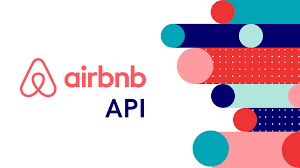Introduction
Monetizing mobile apps has become an essential aspect of app development, offering businesses revenue opportunities and sustainable growth. In the Indian market, where mobile app usage is skyrocketing, it is crucial to implement effective monetization strategies. This article aims to provide insights into how to monetize your mobile app in India, outlining strategies and best practices for maximizing revenue.
1. In-App Advertising:
In-app advertising is a popular monetization strategy in the mobile app ecosystem. Consider the following approaches for implementing in-app advertising in India:
- a) Banner Ads: Integrate static or animated banner ads within your app’s interface. Ensure that the ads are relevant to your target audience and do not disrupt the user experience.
- b) Interstitial Ads: Display full-screen ads at natural break points within the app, such as between levels in a game or during transitions. However, be cautious not to overwhelm users with excessive ad frequency.
- c) Native Ads: Blend ads seamlessly with your app’s content and design, providing a non-intrusive advertising experience. Native ads are often more engaging and effective in capturing user attention.
- d) Video Ads: Incorporate short video ads that users can optionally view for rewards or access to premium content. Video ads can be highly engaging and offer better revenue potential.
2. In-App Purchases (IAP):
Implementing in-app purchases allows users to unlock additional features, content, or virtual goods within the app. Consider the following approaches for effective IAP monetization:
- a) Freemium Model: Offer a free version of your app with limited features and provide premium features through in-app purchases. This approach allows users to experience the app’s value before deciding to upgrade.
- b) Subscriptions: Provide subscription-based access to premium content or services within your app. Offer different subscription levels with fluctuating advantages to take special care of various client fragments.
- c) Virtual Goods or Currency: Create a virtual economy within your app, allowing users to purchase virtual goods, upgrades, or in-app currency. Implement a balance between free and paid virtual goods to maintain engagement.
3. Sponsorships and Partnerships:
Explore opportunities for sponsorships and partnerships with relevant brands or businesses. This can include featuring sponsored content, collaborating on promotions or events, or cross-promoting other apps or products. Choose partners that align with your app’s target audience and value proposition.
Importantly, consider to connect with mobile app development India in order to know more
4. Data Monetization:
Carefully consider data monetization strategies while ensuring user privacy and compliance with data protection regulations. Anonymized and aggregated user data can provide valuable insights to advertisers or market research firms. However, it is crucial to obtain user consent and clearly communicate data collection practices.
5. In-App Surveys and Market Research:
Engage users through in-app surveys and market research to gather valuable feedback and insights. Collaborate with market research firms or brands to conduct surveys or collect user opinions. This approach not only generates revenue but also enhances user engagement and satisfaction.
6. Affiliate Marketing:
Leverage affiliate marketing to generate revenue by promoting third-party products or services within your app. Partner with relevant affiliate networks or individual brands to earn commissions on referred sales or leads. Ensure that the promoted products align with your app’s niche and cater to your user base.
7. Offer Premium or Ad-Free Versions:
Provide users with an option to purchase a premium or ad-free version of your app. Some users are willing to pay a one-time fee to enjoy an ad-free experience or access additional features. Consider providing a free trial period or limited functionality in the free version to entice users to upgrade.
8. Localize and Adapt Pricing:
India is a diverse market with varying purchasing power across different regions. Localize your app by adapting pricing tiers to cater to different segments of users. Offer lower-priced options or discounts for specific regions to increase affordability and accessibility.
Additionally, you can check out mobile app testing techniques and tools to know more
9. Analyze and Optimize:
Regularly analyze app performance metrics, user behavior, and revenue sources. Identify areas for optimization, such as improving user retention, increasing ad viewability, or refining pricing strategies. Data-driven decision-making is crucial for maximizing monetization opportunities.
10. User Feedback and User Experience:
Pay attention to user feedback and reviews to continuously improve your app’s user experience. User satisfaction directly impacts retention and revenue. Implement user-friendly interfaces, minimize app crashes, and respond promptly to user concerns.
Conclusion
Monetizing mobile apps in India requires a strategic and user-centric approach. By implementing a combination of in-app advertising, in-app purchases, sponsorships, data monetization, and other strategies, businesses can maximize revenue opportunities. It is important to strike a balance between monetization and user experience to ensure sustainable growth and user retention. Regular analysis, optimization, and adaptation based on user feedback and market trends are essential for long-term success in monetizing mobile apps in the dynamic Indian market.

